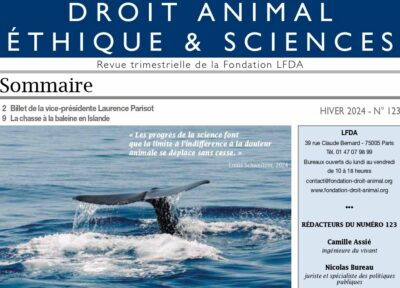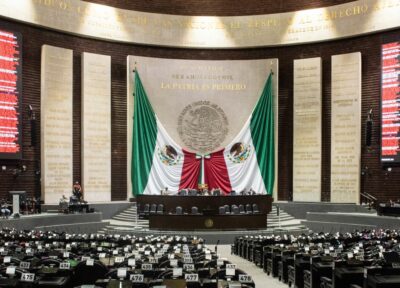by D.N. Qekwanaa, C.M.E. McCrindleb, B. Cenci-Gogac, D. Graced
a Faculty of Veterinary Science, University of Pretoria, South Africa
b School of Health Systems and Public Health, University of Pretoria, South Africa
c Department of Veterinary Medicine, University of Perugia, Italy
d International Livestock Research Institute (ILRI), Kenya
[DOWNLOAD ARTICLE] [Download complete PDF 6.2Mo]
To cite this article (suggested): Qekwana D.N., McCrindle C.M.E., Cenci-Goga B. & Grace D., « Animal welfare in Africa: strength of cultural traditions, challenges and perspectives » [PDF file], In: Hild S. & Schweitzer L. (Eds), Animal Welfare: From Science to Law, 2019, pp.103-107.
Background
Cultural traditions involving animal sacrifice are common among many cultures, including Africans, and have been practised for generations (Thorpe 1993, Ben-Jochannan 1991). These are often called “traditional religions” as they are often not officially recognised, and have no sacred written scripture but passed orally from generation to generation. Furthermore, traditional religions have no apparent historical relation to one another, or to world religions such as Christianity, Islam, Hinduism or Buddhism. Traditional religions play an important role in some communities (Thorpe 1993), helping define tribes and clans and being part of the identity of communities (Flower 2010). Ceremonies where an animal is slaughtered include: to seek help for personal problems, to show respect for the ancestors, to celebrate important events such as weddings, births and also for funerals (Thorpe 1993, Michel et al. 2004). The choice of animal or species to be slaughtered often depends on the type ceremony and affordability. The animal to be used for sacrifice, its characteristics, and the extent in which a community can be involved are determined by the type of ceremony to be performed. For examples the slaughter of chicken requires only a single family to be involved. Whereas, the slaughter of a goat requires the involvement of extended families, community members or religious leaders (De Heusch 1985).
Cultural traditions and laws
In high income countries such as the USA and low to middle income African countries, the right to practice religion is protected by the laws and regulations (Council of the European Union 2009, Shaddow 1991, Mutangi 2008, Assembly 1996). For example, the constitution of the Republic of South Africa states that: “Everyone has the right to freedom of conscience, religion, thought, belief and opinion.” Furthermore, that: “Persons belonging to a cultural, religious or linguistic community may not be denied the right, with other members of that community, to enjoy their culture, practise their religion and use their language; and to form, join and maintain cultural, religious and linguistic associations and other organs of civil society” (Assembly 1996). Similarly, the constitution of Zimbabwe states that “Except with his own consent or by way of parental discipline, no person shall be hindered in the enjoyment of his freedom of conscience, that is to say, freedom of thought and of religion, freedom to change his religion or belief, and freedom, whether alone or in community with others, and whether in public or in private, to manifest and propagate his religion or belief through worship, teaching, practice and observance (Mutangi 2008).” It is interesting to note that, in many African countries no reference is made to animal welfare within their constitution or legal framework; this is in contrast to high income countries which typically protect animal welfare. However, several African countries do have legislation for animal welfare that seeks to prevent abuse or cruelty. The Tanzania Animal Welfare legislation is recognised as one the most modern and comprehensive animal welfare Act in Africa. Nonetheless, in almost all African countries, the implementation of animal welfare regulations is limited (World Organisation for Animal Health 2011).
Animal welfare challenges
The perceptions of animal welfare in Africa differ by region, culture and customs. Although everyone has the right to practice their culture or religion, the lack of understanding or tolerance of African culture has resulted in a conflicts between traditional slaughter practitioners and animal welfare advocacy groups in South Africa. The resulting outcome is a number of animal welfare court cases between 2007 and 2009:
In 2007, a case of a traditional African ritual thought to appease the ancestors was scheduled to be performed by a prominent member of the South African parliament. However, this resulted in outcry by the public and the animal rights activists who considered the sacrifice an act of unnecessary cruelty to the animal. Criminal charges were laid against the perpetrator in the Johannesburg High Court (Behrens 2009, Amoah, Bennett 2008). In 2009, Animal Rights Africa Trust filed a case to prevent sacrificing a bull in the Zulu annual celebration of the First Fruits. However, in both cases the court found in favour of those wishing to conduct the sacrifice.
Global definition of animal welfare
Broom (1991) defines animal welfare as “the welfare of an individual is its state as regards its attempts to cope with its environment”. The last decade, has seen a significant increase in animal welfare. In particular, definitions for animal welfare and standardization of indicators for animal welfare (Fraser 2003, Wemelsfelder et al. 2000, Blokhuis et al. 2003). However, much of this research has focused on modern agri-food chain operations, such as abattoirs. Slaughter without stunning is controversial area a welfare standpoint (Grandin 2014, Grandin 2010). Grandin (2014) raised two separate animal welfare issues related to slaughter without stunning: distressing restraint of the animal during slaughter and painful cutting the throat. In African countries, the lack of infrastructure is a major constraint to animal welfare. For example, during the traditional slaughter of an animal in South Africa, the most common method of restraint is tying the animal to a tree or a pole. The method of restraint chosen is determined by the size of the animal, and with small animals often restrained by people. Therefore these methods have the potential to negatively affect the welfare of animals for traditional slaughter purposes. It is important that the socio economic factors are taking into consideration when animal welfare indicators are developed as often these factors are the drivers of animal welfare issues in African conditions.
Stunning during slaughter has been known to improve the welfare of animals by reducing pain and stress during handling (Grandin, 1992). There is scientific consensus that stunning of animals before slaughter reduces pain (Grandin 2001). This conflicts with African traditions that considers bellowing of the animal during slaughter as an indicator of the sacrifice been accepted by the ancestors (Buhrmann 1987, Twala, Hlalele 2012). Moreover, bellowing indicates compromised animal welfare. Therefore, there is a clear conflict between traditional slaughter and science-based slaughter.
Strength of cultural tradition in Africa.
Many Africans depend on livestock for food, income and other socio-economic benefits (Masiga, Munyua 2005). The relationship between livestock and their owner in African conditions is often deep and complex. For example, cattle are commonly given names and may be kept longer than is economically justified because owners consider them as part of the household. Welfare of animals is often linked to the wealth of their owners, with lack of food and exposure to preventable diseases being major causes of impaired welfare. Therefore, ensuring the well-being of animals can contribute to the well-being of the people who keep them.
In modern, intensive farming systems, there is often a weaker relation between farmers and their animals due to the high number of animals, their rapid turnover, and an economic mind set to livestock rearing… In African religions animals are sacred and are offered to gods and ancestors (Braker, et al. 2002, Jackson 1977). The sacrifice of animals or the spilling of blood, is not something that is taken lightly among traditional slaughter practitioners, as an animal’s life becomes a substitution for a human life, a concept known as ‘one life for another’(Jackson 1977). Therefore, the responsibility of slaughtering (exsanguination) an animal is given to an adult or a well-respected member of the community. This ensures that only responsible and skilled people are used during slaughter to minimise unnecessary pain and suffering on the animal. (Thorpe 1993).
Many tribes and clans in Africa recognise certain animals as totems, that is, guardian spirits and helpers. The clans or tribes are obligated not to kill, eat or destroy the totem that they associate with (Asare, Howard & Peligah 2014). For example, in South Africa, the Bataung tribe or clan is not allowed to kill or eat a lion and the Bafokeng are not allowed to kill or eat rabbits. Similar observations have been made in Zimbabwe where the Shona people considered as lions as mediums of Shona ancestors, the guardian of the land (Taringa 2014).
Animal welfare in challenges in Africa
Animal welfare issues in Africa are often complex and linked to cultural, social, religious, political and economic factors (Bayvel et al., 2005). This is further complicated by difference in people’s beliefs and understanding of what is meant by ‘welfare’ (Bayvel, 2008). There are variations in practices between regions, tribes and sometimes among practitioners themselves. This diversity in cultural practices and species of animals involved creates a unique challenge for animal welfare policy in Africa. The lack of resources or lack of knowledge is also contributing to some of animal welfare challenges in Africa. Furthermore, current protocols on good animal welfare are not suitable for African conditions.
Awareness of animal welfare
Animal welfare challenges in Africa seems to be prominent in the small-scale and pastoralist farming systems and rural areas where access to resources as well lack of knowledge exists (Lee, Gereffi & Beauvais 2012). Other welfare problems are more typical of intensive, modern systems. This problem is not only exclusive to Africa, but most developing countries. Countries such as South Africa and Zimbabwe have made significant progress in educating their citizen on animal welfare. The involvement of a number of non-governmental organizations (NGO) in animal welfare issues in the South African Development Community (SADC) region has resulted in a significant increase awareness on animal welfare (World Organisation for Animal Health 2011). However, more still needs to be done to make practitioners and communities aware of animal welfare problems that may arise on farm.
Veterinary service
In almost all countries in Africa, veterinary service is largely provided and funded by the state. This service is affected by a number of factors among those are availability of funding and the prioritization of human related disease over veterinary related diseases (Leonard 1993, Leonard et al. 1999). Therefore, veterinary related problems such as animal health and welfare take a back step. With the recent focus on Ebola, Malaria, HIV and Tuberculosis, funding of many public veterinary services has significantly decreased. The result is a decrease in quality and availability of public veterinary services to address animal welfare issues in affected countries.
Economic factors
Poverty, unemployment and ongoing climate change continue to be a hindrance in addressing animal welfare problems in Africa. Prescribed methods of restraint, methods of transport and methods of treatment of sick animals are often expensive and inaccessible. Therefore, people are forced to use alternative methods which are not welfare friendly. This emphasises that the welfare of animals is directly link to the welfare of humans. Therefore, in trying to address animal welfare issues in Africa, the welfare of humans must also be taken into consideration.
Cultural norms
Africa is rich in diversity and culture, and addressing animal welfare issue is a challenge due to difference in traditional customs and beliefs. In addition, the welfare of humans in the majority of African countries takes priority over animal welfare. However, this is changing as more countries are adopting policies that address animal welfare problems. In order to move forward scientists together with traditional leaders and practitioners need to develop animal welfare systems that do not infringe on the right to freedom of religion.
Conclusion
There is a tension between the current universal definition of animal welfare and the reality of applying to African traditional and cultural ceremonies. Moreover, many low and middle income countries, have multiple, important societal objectives and obtaining optimal animal welfare may be in conflict with these. In many African countries, infrastructure, economic, cultural, and political factors, as well as access to veterinary services have a significant impact on animals and their owners. There is a need for raising awareness and generating evidence on possible animal welfare issues during traditional slaughter. In the absence of stunning, there are available options to reduce the severity of pain during slaughter, such as the use of sharper and longer knives similar to the one used during kosher slaughter.
References
Amoah, J. & Bennett, T. 2008, « The freedoms of religion and culture under the South African Constitution: Do traditional African religions enjoy equal treatment? » Journal of Law and Religion, vol. 24, no. 01, pp. 1-20.
Asare, T., Howard, E. & Peligah, Y. 2014, « The Socio-Cultural Significance of Akan Totemsin Textile Designs: A Means for Preservation of Wildlife in Ghana », The International Journal of Science and Technoledge, vol. 2, no. 6, pp. 155.
Assembly, C. 1996, « Constitution of the Republic of South Africa », Cape Town.
Bayvel, A., Rahman, S. & Gavinelli, A. 2005, AnimalWelfare: Global Issues, Trends and Challenges, No. 636.0832 A598a. Paris, FR: Organización Mundial de Sanidad Animal.
Behrens, K. 2009, « Tony Yengeni’s Ritual Slaughter: Animal Anti-Cruelty vs. Culture », South African Journal of Philosophy, vol. 28, no. 3, pp. 271-289.
Ben-Jochannan, Y. 1991, African Origins of the Major » Western Religions », Black Classic Press.
Blokhuis, H., Jones, R., Geers, R., Miele, M. & Veissier, I. 2003, « Measuring and monitoring animal welfare: transparency in the food product quality chain », Animal Welfare, vol. 12, no. 4, pp. 445-455.
Braker, M.J.E., Udo, H.M.J. & Webb, E.C. 2002, « Impacts of intervention objectives in goat production within subsistence farming systems in South Africa », South African Journal of Animal Science, vol. 32, no. 3, pp. 185-191.
Broom, D.M. 1991, « Animal welfare: concepts and measurement. » Journal of animal science, vol. 69, no. 10, pp. 4167-4175.
Buhrmann, M.V. 1987, « Initiation of Xhosa Indigenous Healers (Amagqira) », Betwixt & Between: Patterns of Masculine and Feminine Initiation, edited by Louise Carus Mahdi, Steven Foster, and Meredith Little, pp. 439-456.
Council of the European Union 2009, 24/09/2009-last update, Council Regulation (EC) No 1099/2009 of 24 September 2009 on the protection of animals at the time of killing (Text with EEA relevance).
De Heusch, L. 1985, Sacrifice in Africa: a structuralist approach, Manchester University Press.
Flower, O. 2010, 04/10-last update, Animal Sacrifice – Ritual Slaughter in Africa.
Fraser, D. 2003, « Assessing animal welfare at the farm and group level: the interplay of science and values », Animal Welfare, vol. 12, no. 4, pp. 433-443.
Grandin, T. 2001, « Cattle vocalizations are associated with handling and equipment problems at beef slaughter plants », Applied Animal Behaviour Science, vol. 71, no. 3, pp. 191-201.
Grandin, T. 2014, « Animal welfare and society concerns finding the missing link », Meat Science, vol. 98, no. 3, pp. 461-469.
Grandin, T. 2010, « Auditing animal welfare at slaughter plants », Meat Science, vol. 86, no. 1, pp. 56-65.
Jackson, M. 1977, « Sacrifice and social structure among the Kuranko », Africa, vol. 47, no. 02, pp. 123-139.
Lee, J., Gereffi, G. & Beauvais, J. 2012, « Global value chains and agrifood standards: challenges and possibilities for smallholders in developing countries », Proceedings of the National Academy of Sciences, vol. 109, no. 31, pp. 12326-12331.
Leonard, D.K. 1993, « Structural reform of the veterinary profession in Africa and the New Institutional Economics », Development and Change, vol. 24, no. 2, pp. 227-267.
Leonard, D., Koma, L., Ly, C. & Woods, P. 1999, « The new institutional economics of privatising veterinary services in Africa », Revue scientifique et technique-Office international des épizooties, vol. 18, pp. 544-561.
Masiga, W.N. & Munyua, S.J.M. 2005, « Global perspectives on animal welfare: Africa », Revue Scientifique Et Technique-Office International Des Epizooties, vol. 24, no. 2, pp. 579-587.
Michel, A.L., Meyer, S., McCrindle, C.M.E. & Veary, C.M. 2004, « Community based veterinary public health systems in South Africa: current situation, future trends and recommendations », Expert consultation on community based veterinary public health (VPH) systems, no. 2, pp. 71-78.
Mutangi, T. 2008, « Religion, law and human rights in Zimbabwe », African Human Rights Law Journal, vol. 8, no. 2, pp. 526-545.
Shaddow, T.H. 1991, 6/1/1991-last update, Religious Ritual Exemptions: Sacrificing Animal Rights for Ideology.
Taringa, N.S. 2014, The Sacred Duty of Animals in African Traditional Religion and Culture.
Thorpe, S.A. 1993, African Traditional Religions. Third Impression, University of South Africa, Sigma Press, Koedoespoort, Gauteng, South Africa.
Twala, C. & Hlalele, D. 2012, « Contesting the African ritual of animal slaughtering as intangible cultural heritage: A case of Tony Yengeni in South Africa », Acta Ethnographica Hungarica, vol. 57, no. 2, pp. 383-396.
Wemelsfelder, F., Hunter, E., Mendl, M.T. & Lawrence, A.B. 2000, « The spontaneous qualitative assessment of behavioural expressions in pigs: first explorations of a novel methodology for integrative animal welfare measurement », Applied Animal Behaviour Science, vol. 67, no. 3, pp. 193-215.
World Organisation for Animal Health 2011, 04/2011-last update, Animal welfare in OIE member countrie and territories in the SADC region-Summaries of baseline country assessments.




